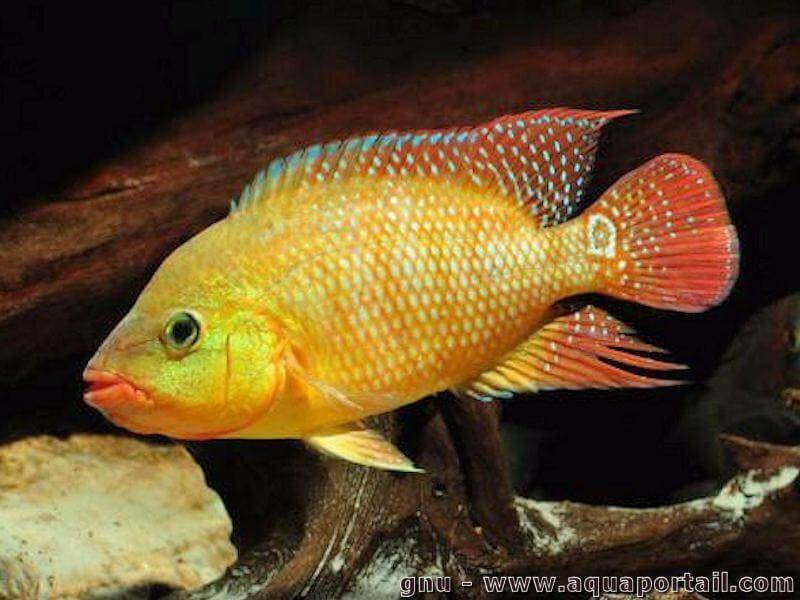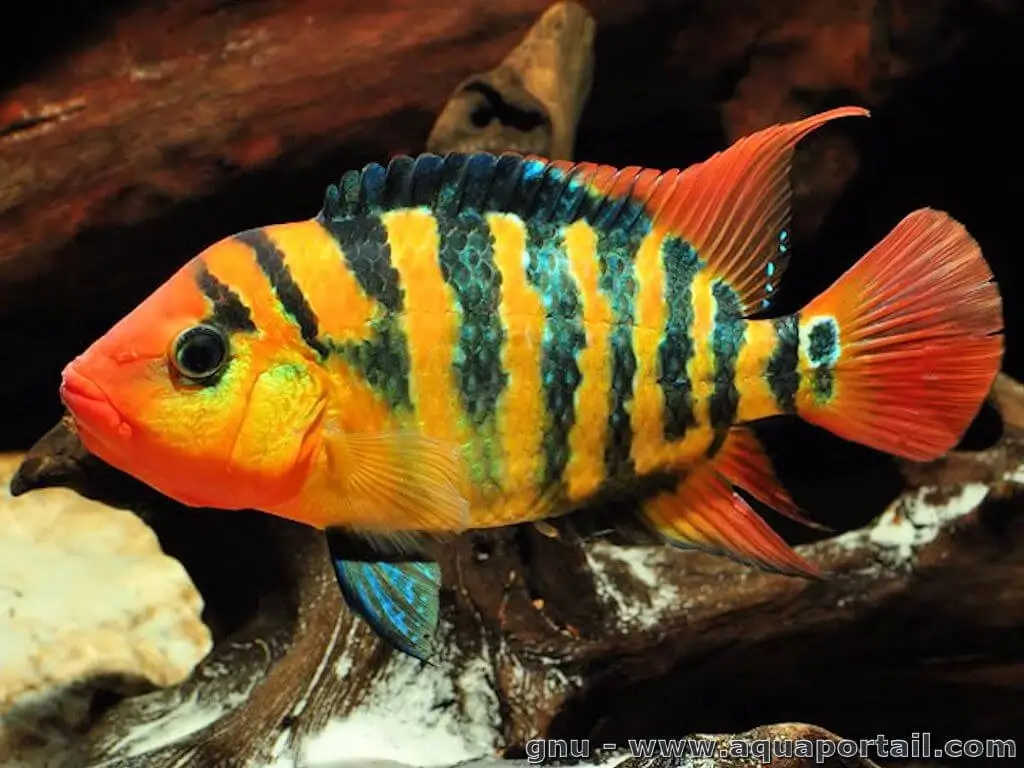Mesoheros Festae
Mesoheros Festae, also known as the Red Terror Cichlid, is a stunning and elegant fish native to South America. Its vibrant red color and intriguing behavior have captured the attention of fish enthusiasts worldwide. In this blog post, we will delve into the world of Mesoheros Festae and explore its characteristics, habits, and requirements.
Potential Challenges of Keeping Mesoheros Festae
Mesoheros Festae may pose various challenges for inexperienced aquarists. First and foremost, it requires a large aquarium of at least 75 gallons to meet its needs fully. This fish is highly territorial and aggressive towards other fish, so it would be best to keep it alone or in a species-specific tank. Additionally, Mesoheros Festae requires a high-protein diet that can be expensive and challenging to obtain. Finally, this fish can reach a size of up to 12 inches, so be prepared for its growth and the need for more significant aquarium systems.
Understanding the Target of Mesoheros Festae
Mesoheros Festae belongs to the family of Cichlidae and is native to the Pacific side of Western Ecuador and Northwestern Peru. It inhabits slow-moving rivers, lakes, and streams with abundant vegetation and rocky outcroppings. Mesoheros Festae is primarily carnivorous, feeding on small fish, insects, crustaceans, and other aquatic invertebrates.
Summary of Main Points
Mesoheros Festae is a striking fish that requires special attention from the aquarist due to its territorial and aggressive nature. This fish is carnivorous and requires a large aquarium and a high protein diet to thrive. In the next sections, we will dive deeper into the behavior, habitat, and proper care of Mesoheros Festae.
Mesoheros Festae's Natural Habitat
Mesoheros Festae is used to living in slow-moving waters with lots of vegetation and open spaces. In the aquarium, it is essential to replicate this environment, ensuring that there are enough hiding spots and open space for the fish to move around. You can add fine sand or fine-grain gravel substrate, plants such as Vallisneria and Anubias, and rocky outcroppings to mimic the natural ecosystem of Mesoheros Festae.
I remember setting up a 150-gallon aquarium for my pair of Mesoheros Festae. I tried to recreate their natural habitat as closely as possible, adding rocky caves, sandy substrate, and a few low-light plants. I was amazed at how active and playful they were from the very beginning, exploring the aquarium and claiming their territories.
Mesoheros Festae's Behavior
Mesoheros Festae is an incredibly territorial and aggressive fish. It is best to keep it alone or in a species-specific tank due to its tendency to attack other fish. This fish is also renowned for its breeding behavior, exhibiting a beautiful courtship dance where the male and female circle each other, flashing their vibrant colors and flaring their fins.
It is essential to provide enough space and hiding spots for Mesoheros Festae to avoid excessive aggression and stress. You can also try to divide the aquarium into territories and decorate each with different rocks and caves to satisfy the territorial instinct of this fish.
Diet and Feeding
Mesoheros Festae is primarily carnivorous and requires a high protein diet to thrive. In the wild, it feeds on small fish, insects, crustaceans, and other aquatic invertebrates. You can feed it with a varied diet of pellets, frozen and live food, including bloodworms, brine shrimp, krill, and small pieces of fish. It is essential to avoid overfeeding to prevent digestive problems and pollution in the aquarium.
Breeding Mesoheros Festae
Breeding Mesoheros Festae can be a challenging but rewarding experience for aquarists. As previously mentioned, this fish exhibits a beautiful courtship dance where the male and female circle each other, displaying their vibrant colors and flaring their fins. Once the female lays the eggs, the male fertilizes them, and both parents take turns caring for the eggs and fry.
If you plan to breed Mesoheros Festae, you should provide them with plenty of hiding spots and a flat surface to lay their eggs on. The aquarium must be clean, and the water should be of high quality to ensure successful breeding. Additionally, you should introduce a varied diet and perform regular water changes to support healthy fry development.
Question and Answer Section
Q: Can Mesoheros Festae live with other fish?
A: Mesoheros Festae is highly territorial and aggressive, so it is best to keep it alone or in a species-specific tank.
Q: How big will Mesoheros Festae grow?
A: Mesoheros Festae can grow up to 12 inches in size, so it is essential to provide a large aquarium and plan for their growth requirements.
Q: What kind of food should I feed Mesoheros Festae?
A: Mesoheros Festae is primarily carnivorous and requires a high protein diet. You can feed it with a varied diet of pellets, frozen and live food, including bloodworms, brine shrimp, krill, and small pieces of fish.
Q: How do I breed Mesoheros Festae in the aquarium?
A: If you plan to breed Mesoheros Festae, you should provide them with plenty of hiding spots and a flat surface to lay their eggs on. The aquarium must be clean, and the water should be of high quality to ensure successful breeding. Additionally, you should introduce a varied diet and perform regular water changes to support healthy fry development.
Conclusion of Mesoheros Festae
In this blog post, we have explored the world of Mesoheros Festae, the Red Terror Cichlid. This fish is striking and beautiful but requires special attention and care due to its territorial and aggressive behavior. Proper environment, diet, and breeding practices are essential to ensure the well-being of Mesoheros Festae in the aquarium. With the right approach and dedication, Mesoheros Festae can be a rewarding addition to any fish enthusiast's collection.
Gallery
Mesoheros Festae (Terreur Rouge)

Photo Credit by: bing.com / festae terreur poisson espèce
Mesoheros Festae (Terreur Rouge)

Photo Credit by: bing.com / festae cichlasoma cichlid cichlids rouge terreur poisson
Freshwater Fishes Of Western Ecuador- Mesoheros Festae
Photo Credit by: bing.com / festae specimen collected mantequilla abras drainage preserved esmeraldas left right
Mesoheros Festae - Red Terrors - YouTube

Photo Credit by: bing.com / festae
MESOHEROS Festae Courtship - YouTube

Photo Credit by: bing.com / festae